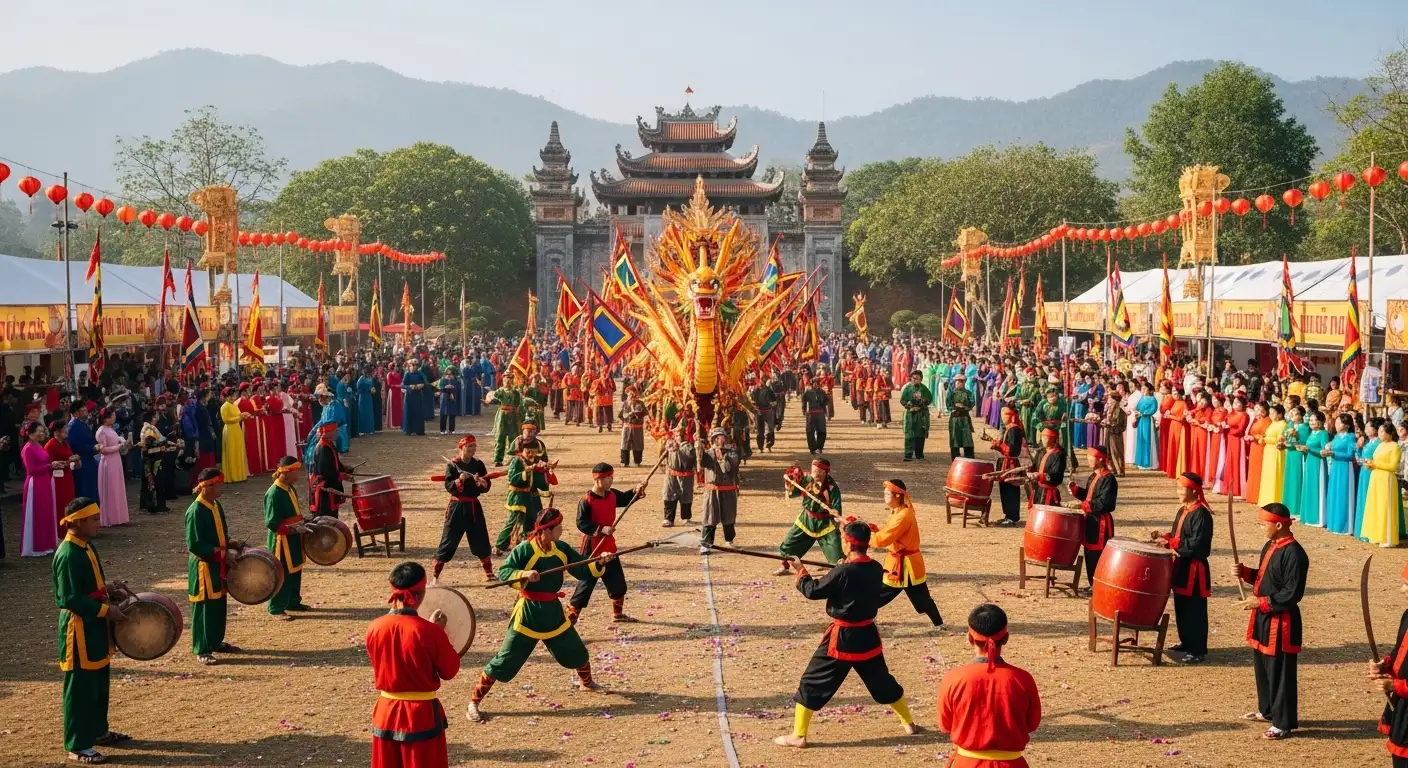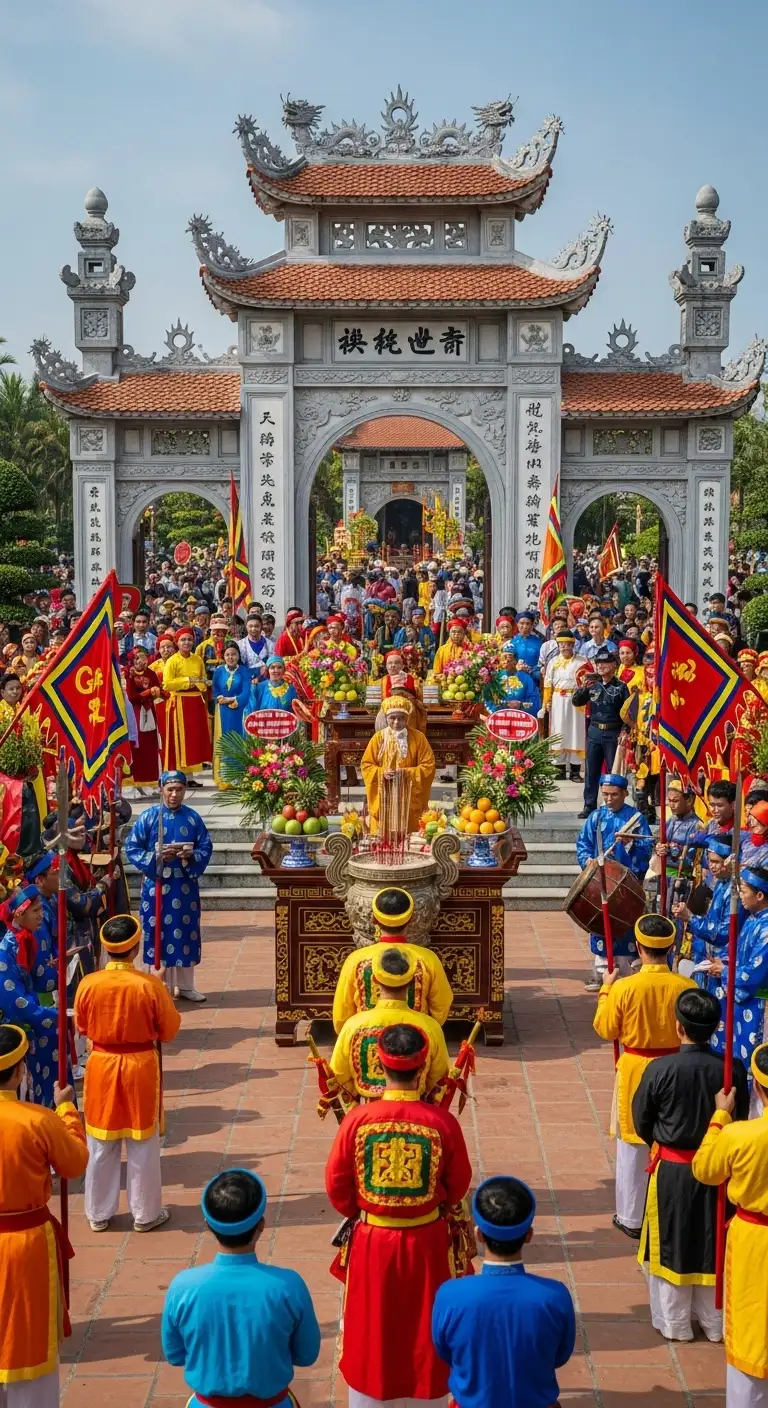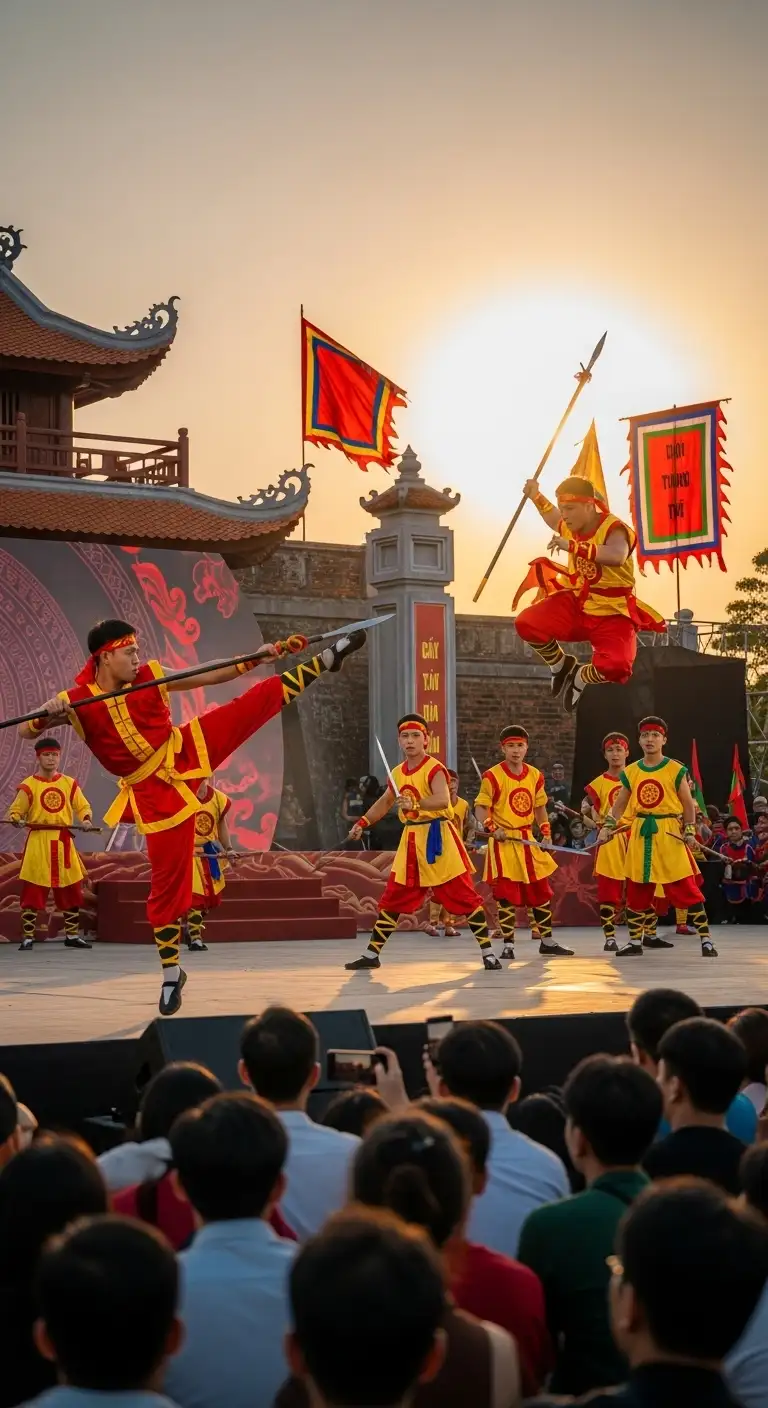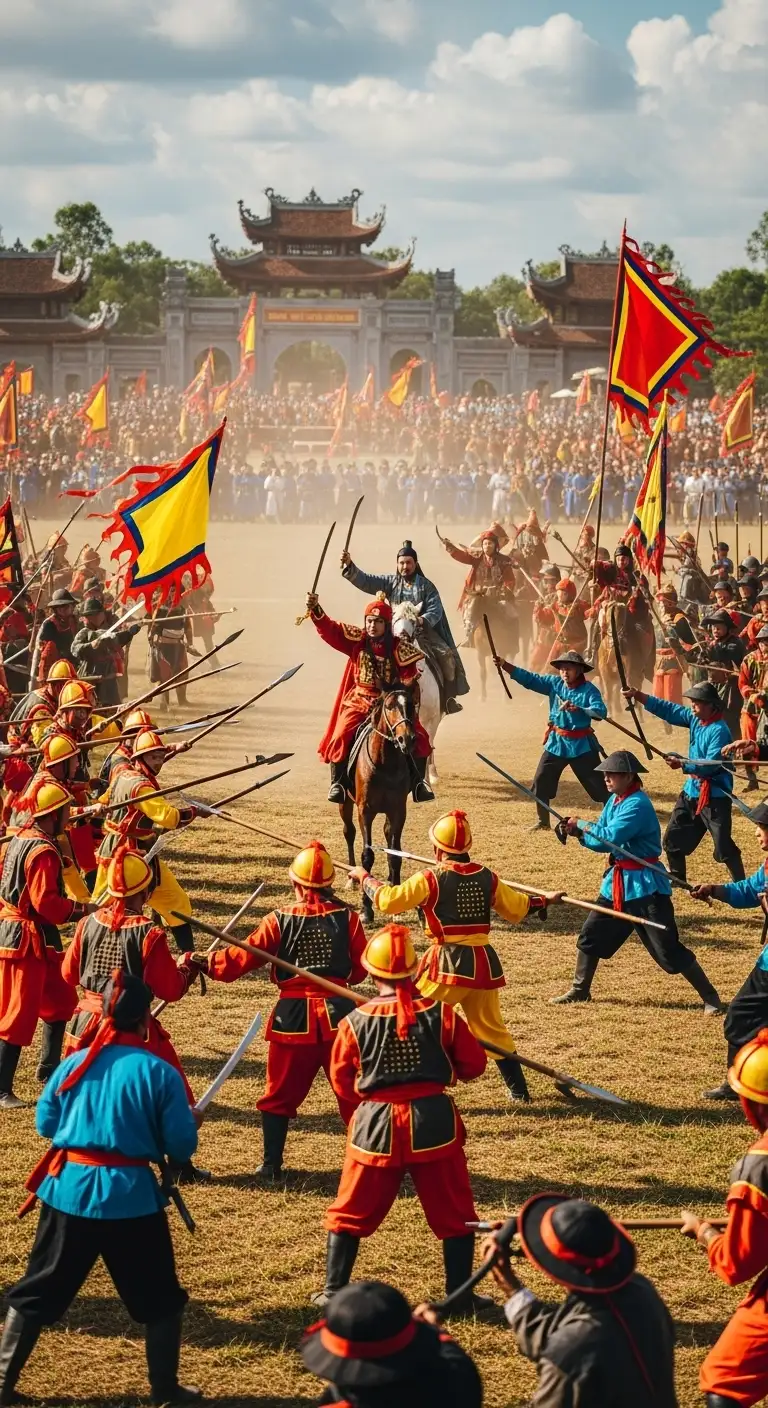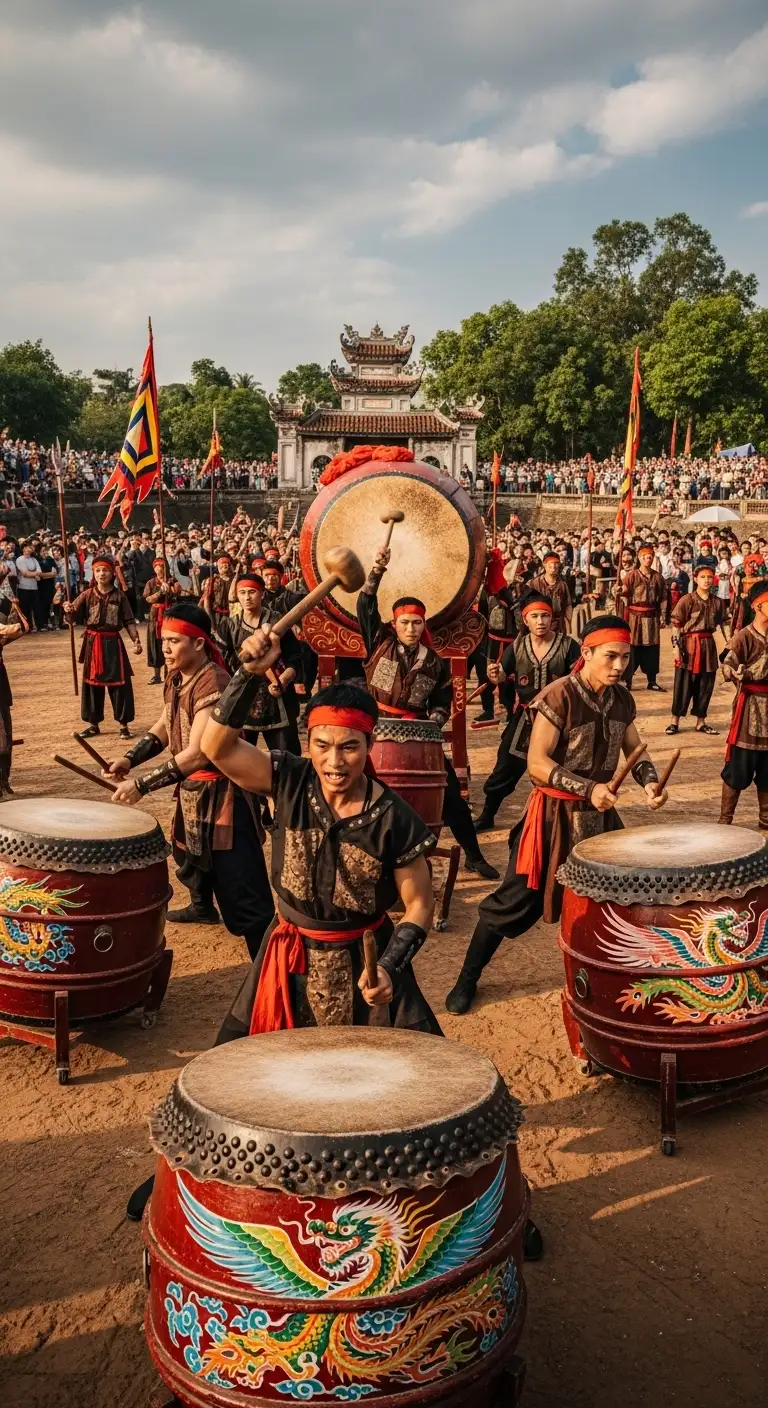Quick Facts
| Data Field (Title) | Content | Icon/Note |
|---|---|---|
| Vietnamese Name | Lễ hội Đống Đa - Tây Sơn (or Quang Trung King Festival) | Commemorates the Ngoc Hoi-Đống Đa Victory. |
| Honoree | Emperor Quang Trung (Nguyễn Huệ) and the Tây Sơn brothers. | National hero and leader of the Tây Sơn Uprising (late 18th century). |
| Location | Quang Trung Museum, Phú Phong Town, Tây Sơn District, Bình Định Province. | The birthplace and historical site of the Tây Sơn movement. |
| Timing | Annually, on the 4th and 5th day of the 1st Lunar Month (Tết). | Coincides with the anniversary of the victorious Ngoc Hoi-Đống Đa battle. |
| Focus | Celebrating the military genius, martial arts, and cultural heritage of the Tây Sơn Dynasty. |
I. Overview: Celebrating the Martial Spirit of the Nation
The Tây Sơn Festival is a grand historical and cultural celebration held in Bình Định Province, the legendary “Land of Martial Arts” and the birthplace of the Tây Sơn Uprising. The festival primarily commemorates the incredible military victory of Emperor Quang Trung (Nguyễn Huệ) over 290,000 Qing invaders during the Ngoc Hoi-Đống Đa Battle in the spring of 1789.
Held during the vibrant Tết (Lunar New Year) holidays, the festival is a solemn ritual to honor the heroes of the Tây Sơn movement and a spectacular showcase of the region’s unique martial culture.
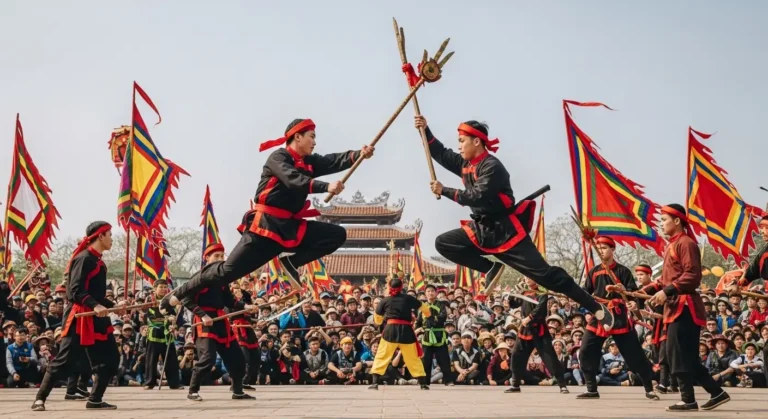
II. The Significance of the Tây Sơn Dynasty
The Tây Sơn Uprising, led by the three Nguyễn brothers (Nhạc, Huệ, and Lữ), marked a period of national unity and heroic defense in the late 18th century.
Emperor Quang Trung: Nguyễn Huệ, who later became Emperor Quang Trung, is revered as one of Vietnam’s most brilliant military leaders, known for his swift, decisive, and unexpected attacks, epitomized by the march from Huế to Hà Nội (Thăng Long) during Tết to defeat the foreign forces.
National Pride: The festival is an important event for educating younger generations about national pride, patriotism, and the heroic achievements of their ancestors.
III. Major Festival Activities and Performances
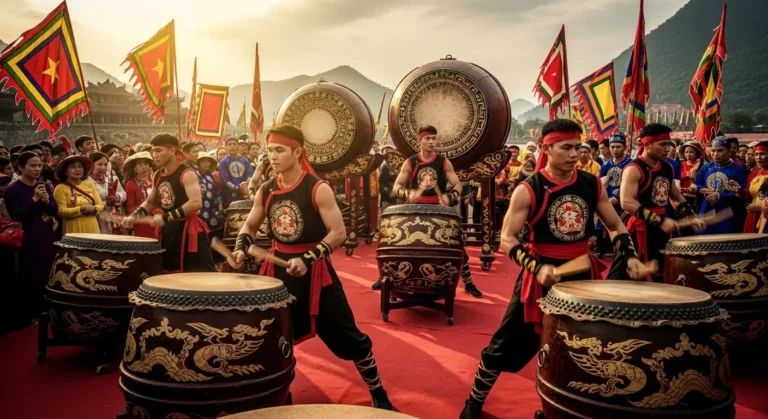
The Lễ hội Tây Sơn is known for its dramatic reenactments and displays of traditional martial arts, reflecting Binh Định’s heritage as a ‘Land of Martial Arts’ (đất võ).
1. Historical Reenactment and Ceremony
Commemoration Ceremony: A solemn ritual held at the Quang Trung Museum shrine, where participants offer incense to the three Tây Sơn brothers and King Quang Trung.
Reenactment of the Battle: The highlight is a grand artistic and martial arts performance that dramatically reenacts the Ngoc Hoi-Đống Đa victory, often featuring thousands of actors, battle flags, and historically accurate costumes, sometimes even including battle elephants.
2. Tây Sơn Martial Arts (Võ Tây Sơn)
Martial Arts Showcase: The festival features stunning demonstrations of Võ Tây Sơn (Tây Sơn Martial Arts), the unique traditional fighting style developed and perfected by Nguyễn Huệ’s army.
Famous Techniques: Performances include famed unarmed forms like Lão Mai Độc Thọ and Hùng Kê Quyền (Rooster Martial Arts), as well as weapon-based routines.
3. The Tây Sơn Battle Drum (Trống Trận Tây Sơn)
Rhythmic Power: A unique and powerful performance featuring dozens of large leather drums played in unison. The drumming is not merely music but a rhythmic depiction of an army marching to war, symbolizing the might and spirit of the Tây Sơn forces.
4. Cultural Activities
Traditional Arts: The festival often includes performances of Tuồng (Vietnamese classical opera), boat racing, and various folk games, adding a festive cultural layer to the solemn commemoration.
Visitor Information: The festival is a spectacular opportunity to witness a unique blend of history, military culture, and performance arts, drawing large crowds who wish to pay homage to a national hero in his ancestral homeland.
